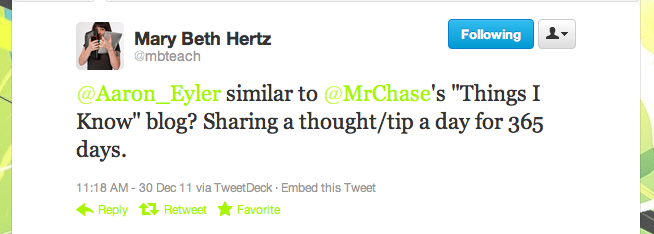A few days ago, a colleague stopped by my desk for one reason and stayed to understand what she saw on one of my monitors.
“You’re like a day trader,” she said, noting the stream of information that was scrolling by.
It was my twitter feed. More to the point, it was many twitter feeds, burning through multiple columns of TweetDeck.
“Are you reading all of those?” she asked.
No, I explained, they were segmented pieces of the whole, and I’d broken them apart so I could look at the information in a way that made sense to me.
Selecting one of the more depressing columns via which I follow the hashtag #phled, I explained how I controlled and decided what went where and why.
Picture your feeds, whatever they may be, as gallery spaces. And the art, rather than a hodgepodge of what’s been bequeathed, is rotating collection of the latest works by those you consider to be masters.
After a few minutes, I think she still thought me addicted, but she walked away a little more informed, so that’s something. It took me back to this Wall Street Journal piece I’d bookmarked years ago via Will Richardson’s blog on the neurological effects of information grazing.
It struck me as a better metaphor then, and I’ve used it since when talking with schools and organizations all over the world. Still, it is imperfect.
What I do on twitter, what I look for on Feedly isn’t exactly grazing in the sense of what is conjured up by the word.
I don’t know about you, but this Illinois son sees cows meandering through a pasture, glutting themselves on whatever they’ve stopped in front of.
This is also what likely scares newbs away from social media and connected learning – visions of the human equivalent of those cows with pastures replaced by the digital fields of the InterWebz.
So, let’s think of it differently.
Picture your feeds, whatever they may be, as gallery spaces. And the art, rather than a hodgepodge of what’s been bequeathed, is rotating collection of the latest works by those you consider to be masters.
From time to time, often by way of vouching from one of those whose work you appreciate, a guest artist’s work is invited in for a probationary period, and you decide whether or not to make that artist a resident.
And the thing about this gallery – and really it’s more like a collection of galleries spread across the geography of your network – is that it’s there, rotating, waiting for you in your pocket or whatever screen is handy.
You visit it like you’d visit any other cultural institution – whenever you like, for as long as you like. Sometimes, it may go days or weeks between visits. Other times, you may lose whole days to wandering its virtual halls. Depending on the requirements of your time either or both of these is exactly the perfect approach for appreciating information.
One other piece, one of the best pieces, (written about in much greater detail by Henry Jenkins, Sam Ford, and Joshua Green) is the ability to share pieces and artists with other galleries.
This is where the grazing metaphor is most fallacious. When we graze, we consume. We take in and negate access for others. When we curate galleries of information, we put on display those creators and works we appreciate and want to share with others. It’s not about transparency as much as it’s about publicity. Of all the information we curate, not everything is worthy of sharing. The pieces that are, though, are easy to spread.


